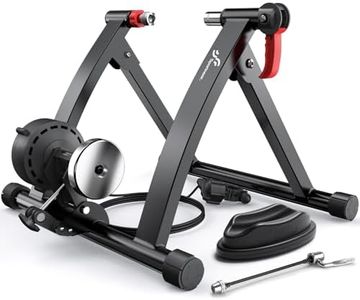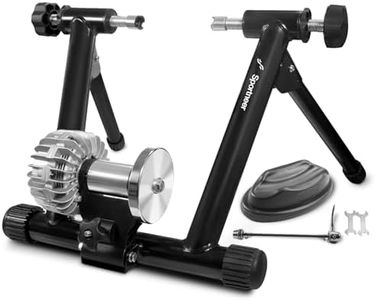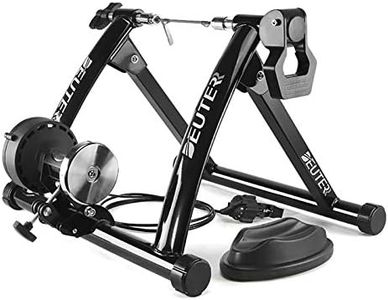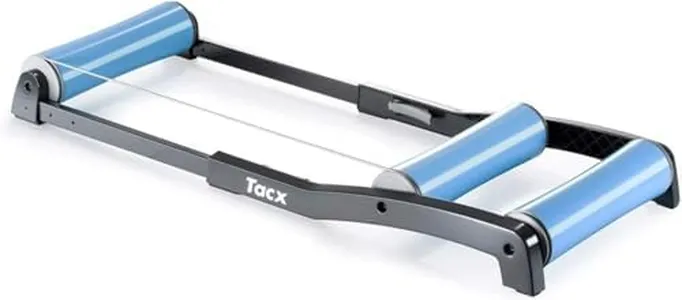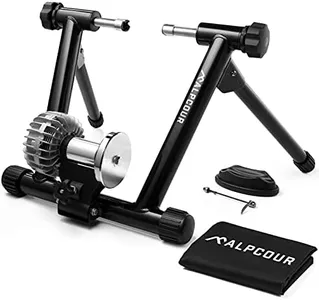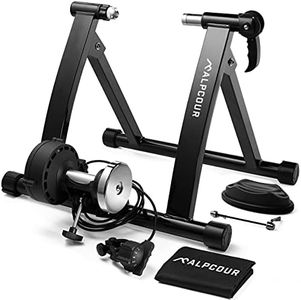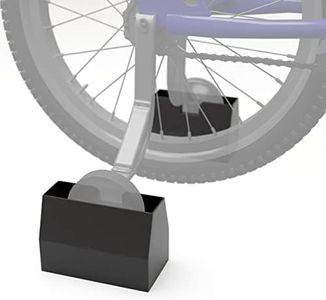We Use CookiesWe use cookies to enhance the security, performance,
functionality and for analytical and promotional activities. By continuing to browse this site you
are agreeing to our privacy policy
10 Best Stationary Bike Stands
From leading brands and best sellers available on the web.Buying Guide for the Best Stationary Bike Stands
Choosing a stationary bike stand can turn your regular bicycle into an indoor exercise machine, letting you cycle at home regardless of the weather. Since there are different types of stands, each affecting your riding experience, noise levels, and workout difficulty, it's important to pick the one that suits your exercise goals and living situation. Understanding the key features of these stands can help you find the best fit for your training style and indoor space.Type of ResistanceThe type of resistance determines how your stand simulates real-world riding effort. There are typically magnetic, fluid, and wind resistance types. Magnetic is quieter and allows you to adjust difficulty easily. Fluid types provide a smoother, more road-like feel and often increase resistance as you pedal harder but can cost more and get hotter. Wind resistance stands generate more noise but are very durable and simple. If you value quiet workouts or need more variable and realistic resistance, go for fluid or magnetic. For those who just want basic indoor riding and don't mind the noise, wind types can be a good fit.
Compatibility With Bike TypesNot all stands fit every bike. Some are designed for road bikes, others for mountain bikes, and a few can handle both plus different wheel sizes. Check your wheel’s diameter and axle style before picking a stand. If you plan to use the stand with multiple bikes or may get a new bike, choose one with broad compatibility. This makes the stand more versatile and avoids fit problems later.
Ease of Setup and UseSetup difficulty can vary a lot. Some stands are ready to use out of the box and clamp onto your bike quickly, while others require tools and adjustments. If you want a hassle-free experience or you’ll be regularly swapping your bike in and out, look for stands with quick-release mechanisms and simple adjustment features. Those who plan to leave their bike mounted for long periods might tolerate a more complicated setup.
Stability and Weight CapacityA stable stand keeps your workouts safe and comfortable. Wider bases and rubberized feet limit wobbling, especially during intense rides. Weight limits can differ, so check that the stand supports your weight plus your bike. If you're a vigorous rider or want peace of mind during sprints, opt for sturdy, heavy-duty models that focus on stability.
Noise LevelNoise is an important factor, especially for apartments or shared spaces. Fluid and magnetic stands are generally quieter, while wind trainers can be quite loud. If you plan to ride early in the morning or later at night, a quieter stand will keep the peace with those around you.
Portability and StorageSome bike stands can be folded and stored away when not in use, while others are bulkier and meant to be left in place. If space is tight or you want to put the stand away after each workout, choose a lightweight, foldable design. This also helps if you expect to transport the stand between locations.
